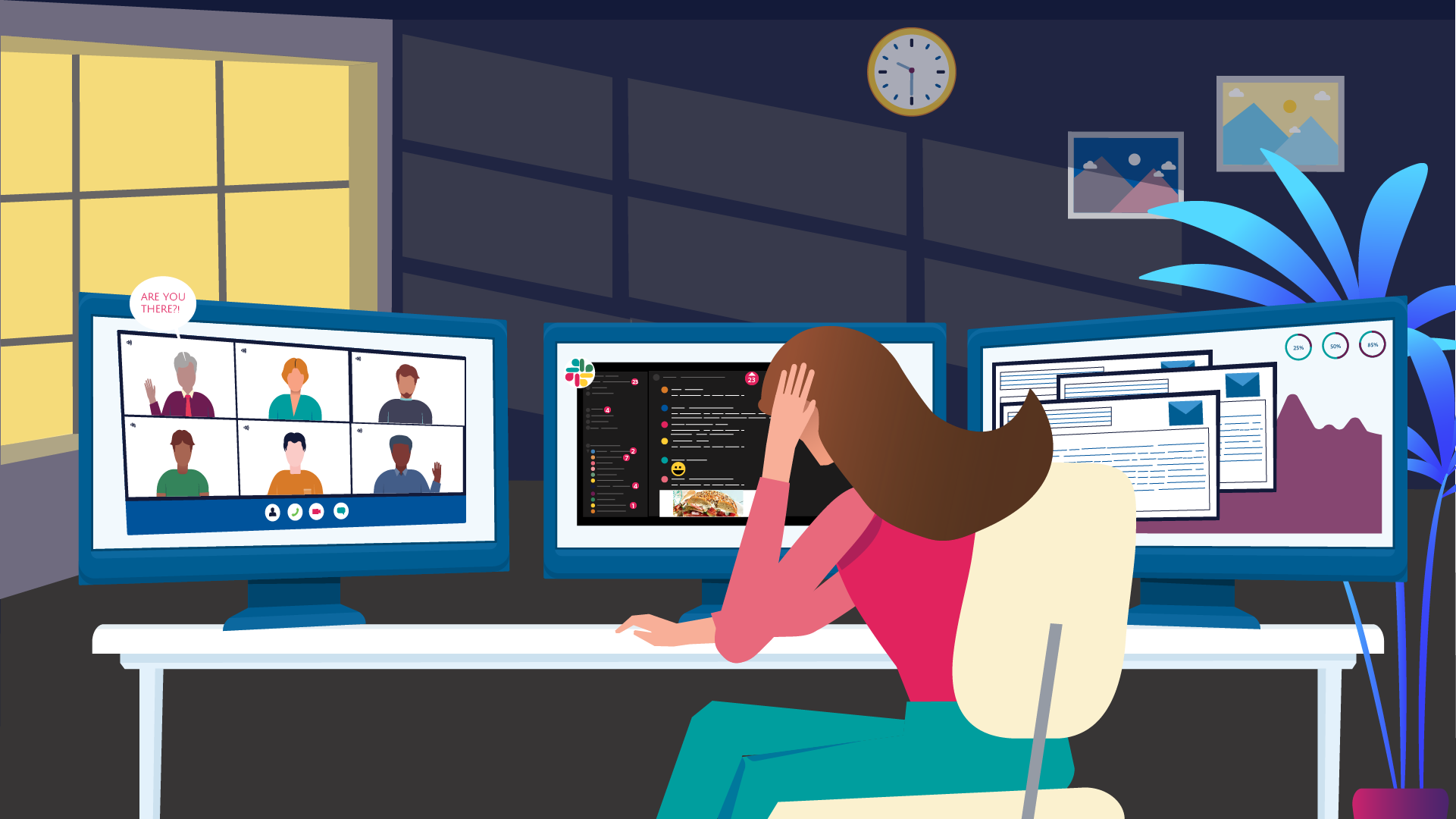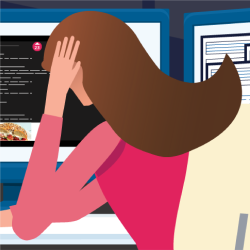Directors Share Tips for Beating Digital Anxiety

If you feel overwhelmed by constant notifications, emails, and video conference calls, you’re not alone!
In January 2021, author Erica Dhawan and Quester, a strategy and insights agency, surveyed 1,939 full-time employees from a wide range of industries about their experience with digital communication.
Of those surveyed, about 44% of respondents said that they struggle with frequent digital anxiety. The study also found that a higher number of managers (48%) reported feelings of digital anxiety, compared to 39% of employees.
Digital anxiety is more than just Zoom fatigue - it’s stress brought on by a number of digital communication factors. These include distraction due to a barrage of notifications, technical issues causing interruptions, and poor communication.
These stressors affect all ages across remote and hybrid workforces. Interestingly, the survey found digital anxiety was most prevalent among the younger generations. Fifty-three percent of the “digital natives” of Gen Z (born 1997-2003) reported feeling digital anxiety, followed by 47% of millennials (born 1981-1996), 40% of Gen X (born 1965-1980), and 34% of baby boomers (born 1946-1964).
Digital anxiety is more than just an annoyance. Poor communication has a direct effect on efficiency and “costs the average office worker four hours per week,” according to Quester and Dhawan.
Shauntia Bell, Division Director for the Division of Enterprise Services, and Tanisha Williams, Deputy Director for the Division of End User Support, have dealt with the challenges posed by digital communication while managing remote teams.
“It was definitely a change for all of us,” says Bell, who recalls working from home while also parenting her young children at the beginning of the pandemic.
While digital anxiety might be a feeling our hybrid workforce knows all too well, small changes can go a long way toward relieving it.
Reduce the number of notifications
A third of respondents in the Quester survey mentioned being inundated with notifications as a stressor. This includes not only a large number of emails and Slack pings, but also frequent digital meetings and calls. All of this can culminate in a distracted feeling that takes attention away from work.
Bell acknowledges that the many forms of communication can be overwhelming. “It used to be that I could walk over to their cubicle or have a chat in the hallway,” Bell says. “Now, I can’t see you, so the only way I can get in contact is to send you a Slack or call you. It requires a lot more tools.”
While more tools may be required for communication, changing your settings can be a simple technique for managing all of those notifications. Williams finds it helpful to mute channels that aren’t critical.
“Not everything is urgent or has to be addressed right in that moment,” says Williams. You can always come back and look at unread messages in the non-critical channels when you have extra time.
Another approach is to set a Do Not Disturb preference, which reduces off-hours pings. Both Bell and Williams set boundaries to give themselves control over work-life balance and combat digital anxiety.
“You get messages popping up all day and you need to be mindful of that,” Bell says.
Improve communication by building rapport and trust
According to the Quester research, “over one-third of employees are dissatisfied with how their managers communicate.” A lack of communication is among the top aggravations. Clear communication is crucial for success. Each team member needs to know what is expected of them and that their work is valued. Taking the time to build rapport through one-on-ones and other team-building activities can help managers establish trust and ensure continued employee engagement.
Williams’ team utilizes virtual activities, like games and a gift exchange, to create a deeper sense of engagement across her remote team. The team has also found safe ways to meet in person. Team members have immensely enjoyed seeing one another.
“Banter and work mixed with light conversation have really strengthened us as a group,” says Williams.
Throughout her management career, Bell has learned that employees are more productive when you care about their individual needs. She uses one-on-ones to maintain relationships with her remote employees.
“It’s not just to talk about what you’re working on or what I think you should be working on…we touch base…and these informal meetings help us develop a bond amongst the team,” Bell says.
Optimize tools to improve collaboration and efficiency
Employees typically appreciate the option to use a variety of communication tools, like video conferencing, face-to-face, phone calls, and Slack or other collaboration software. It can take some time to determine which tool is best to communicate well.
For complex or detailed information, a Slack Huddle or audio call is often best. Williams finds that email format lends itself well to formal or longer communication, especially when sending files is needed, while Slack and Teams are great tools for shorter or informal messages.
Like Williams, Bell’s team primarily uses Zoom, email, and Slack. She takes advantage of Slack’s status and availability settings to determine who is online and uses it as an opportunity to gather her team for a quick Huddle, something that was not easily done in a physical workplace.
Adopting basic Slack etiquette can also help managers and employees feel more comfortable using this tool for the best possible collaboration. Writing succinct messages in Slack with bullet points creates clear messaging to quickly get the point across. Not only are emojis fun, they can also be a way for gathering information or voting. Bell’s team also utilizes the thread function to reduce visual clutter and the amount of time spent scanning through a Slack channel for a particular topic.
Finally, you can reduce Zoom fatigue by keeping meetings on topic and within the established timeframe. Increase your performance and presence by avoiding multitasking while in your meetings. As for whether to have cameras on or off, see what OIT staff thought about this subject in a past survey.
Using these techniques can help promote strong communication and relieve stress within a hybrid or remote workforce. Remember that communication preferences are neither right nor wrong, just a facet of diversity! Ensuring successful digital communication requires both awareness and a proactive approach to communication.

